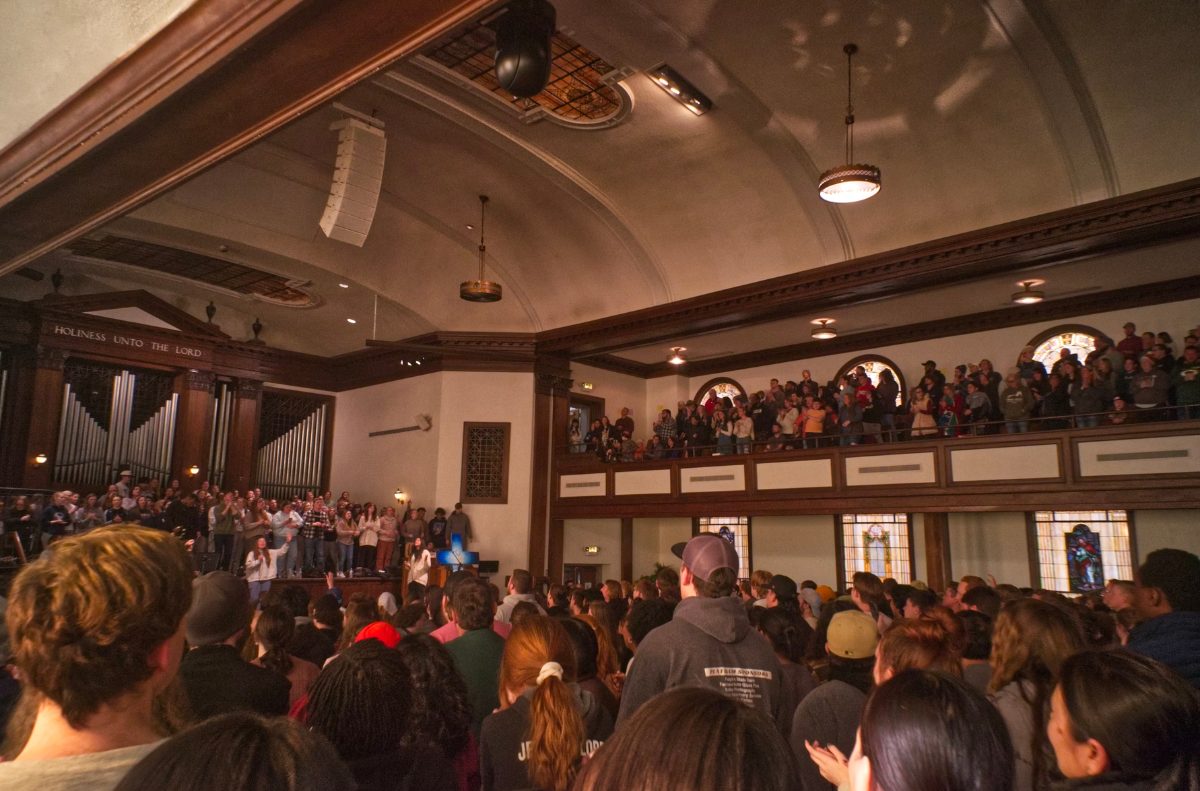It’s been a year since the beginning of the Asbury “revival” in Wilmore, Kentucky. Last year, from February 8th to February 24th, up to 70,000 people visited Asbury University’s chapel to experience what they called an “outpouring,” an “awakening,” or a “revival.”
For two weeks many of the tens of thousands of people who visited Asbury responded to altar calls and witnessed “prophecies”, “speaking in tongues”, “casting out demons”, and “faith healing” at the chapel.
It was one of the biggest news stories at the time. It received attention from every major news outlet from CNN to Fox News. Conservative political commentators like Ben Shapiro, Tucker Carlson, and Charlie Kirk also talked about it on their shows.
What was happening at Asbury immediately became a sign of hope for Christianity and conservatism in America. Therefore, for some, the Asbury “revival” quickly became a test of the sincerity of some people’s relationship with God.
One revivalist preacher compared the Asbury revival to the Ark of the Covenant. He said:
“Do not pay attention to ‘arm-chair quarterbacks’ writing and critiquing Asbury Revival. They are much like Uzzah putting their hand on the ark. Let God do in this and through this moment what He desires and wills.”
Another preacher responding to those who expressed caution about the revival said: “This revival is revealing the hearts that have lost intimacy with the Lord.”
When I shared my concerns about Asbury, I received hundreds of comments saying:
“You sound like a Pharisee questioning Jesus,” “The Pharisaic legalist mindset is showing up, just like when Jesus showed up and didn’t fit their mold,” “I find this so sad. Reminds me of the religious leaders in Acts,” “You’re a Doubting Thomas,” and “You’re blaspheming the Holy Spirit.”
Another comment said: “I have no doubt God is going to use this movement to change churches and people.”
So a year later, what happened to the Asbury revival? Has God used the revival to change churches?
This week I called churches near Asbury University in Wilmore, Kentucky asking if they’ve experienced significant additions to their church membership or major changes in the lives of their church members because of the “revival.”
Every representative of the churches I spoke to said: “no.”
Nearly all of the people I spoke to said individuals from their churches visited Asbury Chapel during the revival, but they said they couldn’t highlight any lasting outcomes. One representative of a Slavic church said the Russia-Ukraine war has had a more noticeable impact on its members than the “revival.”
Last February, Zack Meerkrabs, the pastor whose sermon apparently started the revival said no one would know if it was a real revival until months later. A year later, it looks like what happened at Asbury was a fad, not a revival.
Seemingly, its only lasting impact is that the University had the biggest enrollment in its 133-year history this past September. One media outlet said it was an “unprecedented increase of nearly 20 percent.”
As I said in my article about Asbury last year, I became a genuine Christian at a fake revival. So I’m not saying it’s impossible that God regenerated or sanctified some people at Asbury. However, because of my experiences with fake revivals, I know how damaging they can be, especially to young Christians.
One of the reasons why many people attached their hopes to the Asbury revival is that it was counter-cultural to what we have become accustomed to over the last few years. Unlike every viral event involving Gen Zs, it looked like they were worshipping Jesus—instead of Black Lives Matter, abortion, LGBT ideology, and other social justice or leftist issues.
After the 2020 riots, the transgender surge, and all kinds of evil promoted by Gen Zs, Asbury revived some people’s hope for America. This is presumably why one comment said:
“This country is probably more in need of faith and expectation than cautious skepticism.”
What that person didn’t consider, apparently, is that one of the reasons why America (including Canada and other Western nations) has become increasingly anti-Christian is because we rarely challenge Christians—especially young Christians—to be discerning.
That lack of discernment is one of the reasons why many Gen Z professing Christians are deconstructing their faith. That lack of discernment could be why thousands of people travelled hundreds of miles to experience the Asbury revival, though they don’t regularly worship at their local church.
Since I grew up in revivalist churches, I’ve seen firsthand how fake revivals have hurt some people’s faith. When a person believes they’ve had a special encounter with God at a “revival”, when they’re told they’ll never be the same, when they experience a high from a revival they can’t receive from a regular Sunday morning at church—what happens when they realize the revival didn’t remove their temptation for porn, fornication, or same-sex lust?
What happens when a supposedly powerful encounter with God doesn’t change them? What hope do they have?
Many of the people I attended “revivals” with became bored by ordinary preaching and ordinary worship at local churches and they left the faith.
I hope the people who supposedly had a powerful encounter with God at Asbury aren’t chasing after signs and wonders (Matthew 12:39). I hope they’re not chasing for a new high. Though the churches near Asbury haven’t been impacted by the “revival”, I hope somewhere, at a church, they’re listening to ordinary preaching that produces an extraordinary change in one soul.

